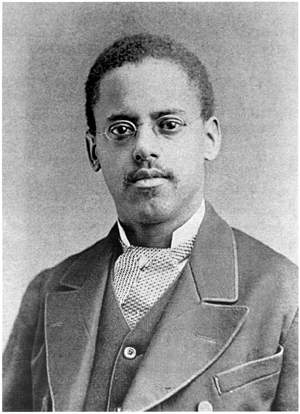Famous African American Inventors
Updated February 21, 2017 | Factmonster Staff 

Lewis Howard Latimer, Patricia Bath, and other exceptional scientistsby Ann Marie Imbornoni |
 Lewis Howard Latimer |
Related Links |
African American Inventors | |
|---|---|
| Thomas L. Jennings (1791-1859) | A tailor in New York City, Jennings is credited with being the first African American to hold a U.S. patent. The patent, which was issued in 1821, was for a dry-cleaning process. |
| Norbert Rillieux (1806-1894) | Born the son of a French planter and a slave in New Orleans, Rillieux was educated in France. Returning to the U.S., he developed an evaporator for refining sugar, which he patented in 1846. Rillieux's evaporation technique is still used in the sugar industry and in the manufacture of soap and other products. |
| Benjamin Bradley (1830?-?) | A slave, Bradley was employed at a printing office and later at the Annapolis Naval Academy, where he helped set up scientific experiments. In the 1840s he developed a steam engine for a war ship. Unable to patent his work, he sold it and with the proceeds purchased his freedom. |
| Elijah McCoy (1844-1929) | The son of escaped slaves from Kentucky, McCoy was born in Canada and educated in Scotland. Settling in Detroit, Michigan, he invented a lubricator for steam engines (patented 1872) and established his own manufacturing company. During his lifetime he acquired 57 patents. |
| Lewis Howard Latimer (1848-1929) | Born in Chelsea, Mass., Latimer learned mechanical drawing while working for a Boston patent attorney. He later invented an electric lamp and a carbon filament for light bulbs (patented 1881, 1882). Latimer was the only African-American member of Thomas Edison's engineering laboratory. |
| Granville T. Woods (1856-1910) | Woods was born in Columbus, Ohio, and later settled in Cincinnati. Largely self-educated, he was awarded more than 60 patents. One of his most important inventions was a telegraph that allowed moving trains to communicate with other trains and train stations, thus improving railway efficiency and safety. |
| Madame C.J. Walker (1867-1919) | Widowed at 20, Louisiana-born Sarah Breedlove Walker supported herself and her daughter as a washerwoman. In the early 1900s she developed a hair care system and other beauty products. Her business, headquartered in Indianapolis, Indiana, amassed a fortune, and she became a generous patron of many black charities. |
| Garrett Augustus Morgan (1877-1963) | Born in Kentucky, Morgan invented a gas mask (patented 1914) that was used to protect soldiers from chlorine fumes during World War I. Morgan also received a patent (1923) for a traffic signal that featured automated STOP and GO signs. Morgan's invention was later replaced by traffic lights. |
| Frederick McKinley Jones (1892-1961) | Jones was born in Cincinnati, Ohio. An experienced mechanic, he invented a self-starting gas engine and a series of devices for movie projectors. More importantly, he invented the first automatic refrigeration system for long-haul trucks (1935). Jones was awarded more than 40 patents in the field of refrigeration. |
| David Crosthwait, Jr. (1898-1976) | Born in Nashville, Tennessee, Crosthwait earned a B.S. (1913) and M.S. (1920) from Purdue University. An expert on heating, ventilation, and air conditioning, he designed the heating system for Radio City Music Hall in New York. During his lifetime he received some 40 U.S. patents relating to HVAC systems. |
| Patricia Bath (1942-) | Born in Harlem, New York, Bath holds a bachelor's degree from Hunter College and an M.D. from Howard University. She is a co-founder of the American Institute for the Prevention of Blindness. Bath is best known for her invention of the Laserphaco Probe for the treatment of cataracts. |
| Mark Dean (1957-) | Dean was born in Jefferson City, Tennessee, and holds a bachelor's degree from the University of Tennessee, a master's degree from Florida Atlantic University, and a Ph.D. from Stanford University. He led the team of IBM scientists that developed the ISA bus—a device that enabled computer components to communicate with each other rapidly, which made personal computers fast and efficient for the first time. Dean also led the design team responsible for creating the first one-gigahertz computer processor chip. He was inducted into the National Inventors Hall of Fame in 1997. |
Back to the main African American Trailblazers page.
See also:




